We see a lot of customized prewar Fords here at Barn Finds. However, this 1939 Ford De Luxe Convertible for sale on Facebook Marketplace in Garland, Texas is advertised as a car customized back in the day. The funny thing is that aside from the missing running boards and chromed plates that cover the area where those running boards fit into the fenders, this car is pretty stock. However, the previous owner went to great lengths to update some parts on this convertible to 1940 Ford specifications. Can you identify the changes? Once you get past that sticking point, this car appears to either be an older restoration or a largely original car. Would you be willing to add this drop-top Ford stunner to your garage at the price of $27,000? Thanks to Gunter K. for this fabulously puzzling Flathead-powered Ford find!
1939 was an odd year for Ford. The company offered two lines of automobiles: Standard and De Luxe. Standards were re-hashed 1938 models built to a low cost. Both cars rode on a chassis that was almost identical to what Ford had produced since 1935 but the De Luxe model wore new sheet metal. Both cars gained a very overdue safety feature that year when mechanical brakes were finally abandoned for hydraulic brakes. Ford would produce the same brake design until the end of 1948 and owners of some previous Fords could retrofit the system onto their cars.
So, when Ford produced both the Standard and De Luxe in 1940, they had the same basic bodies as the 1939 De Luxe, but various pieces of trim were changed from 1939, and the Standard was less fancy. Confused yet? I’ll explain it a different way. The 1939 De Luxe, 1940 Standard, and 1940 De Luxe were the same car with trim differences made for model change purposes and, in the case of the 1940 Standard, to let your neighbors know that you bought the cheaper version. With many of these parts and pieces being interchangeable, some Ford owners “updated” their cars when possible, using either new parts from Ford or they patiently waited for a higher-end car to hit the junkyard. Why drive a 1939 Ford when you can make everyone think your car is a 1940? Why stick with a Standard when De Luxe trim is just a few bolts and screws away?
That appears to be what happened to this 1939 Ford De Luxe convertible coupe. The seller states that this car was “customized back in the day with several 1940 Ford parts.” Among those would be the front bumper, headlights, the complete dash, and a 1940 model steering column with a column shift for the transmission. The interesting thing about the shifting conversion would be that such a change would necessitate a change to a later transmission as well. Column shifts were used from 1940 through 1948 in every Ford car.
The previous owner also added vent windows and 1940 wheels. The vent windows would be no small task, as it would also necessitate different door glass and different regulators. The bolt pattern for the wheels is also different between 1939 and 1940 cars. Adding 1940 wheels would mandate a change to 1940 brake drums as well. Perhaps the easiest and most sensible change was to 1940 headlights. In 1940, Ford made sealed beam headlights standard on all cars to comply with safety regulations. The whole headlight housing would need to be changed, but that would be a rather simple task after changing out the rest of the previously mentioned parts.
Most of the time changing model year parts on similar Fords isn’t taken to this extreme. The previous owner must have had a donor car lined up and just set to work until it was done. Regardless, the only true “custom” touch is the deletion of the running boards. The chromed plates that cover the fender openings give the car a Cord 810/812 styling cue. During this time, running boards were slowly disappearing from automobiles. Much of this was to widen interiors to give more room to passengers. While this conversion doesn’t look bad and gives the car a slightly more modern appearance, any future owners can easily source a new set of running boards with the rubber covering already vulcanized to the metal as they came from the factory back in 1939 and 1940.
A look under the hood reveals what looks to have been the stock engine with the water pumps in the block and the center water intake for the cylinder heads. While most modified cars had some type of aftermarket intake manifold and finned cylinder heads, this car is not so equipped. The only things that stand out as not factory are the chrome acorn nuts on the cylinder heads. We can see that there is a line running off the carburetor into the cowl. I believe this is for the vacuum wipers. In 1940, Ford offered a vacuum-assisted convertible top for this body style. While it is not stated in the ad, it would be interesting to see if the previous owner went to the trouble to add this system to the car. One thing from 1939 that stayed is the rumble seat. That was the last year you could climb into that area and ride, as it was converted into a trunk in 1940.
The seller tells us that the car runs great, and we assume the braking system has been gone through. It will need a set of tires and surely some maintenance before it hits the road again. As a whole, it is a very interesting car that shows just how determined someone can be at updating a car to make it look newer. Classic Ford fans would definitely be interested in this car despite the changes. As a whole, minus the 1940 parts, this is a very stock, well-cared-for car with a lot of potential. Probably the best bet would be to clean it up, make sure the mechanical parts are good to go, and just drive it. They are beautiful cars no matter what year the sheet metal and various parts are from.
Would you restore this Ford to its original 1939 configuration or just leave it as it sits and enjoy it? Do you see any 1940 parts we missed? If so, please share your observations and thoughts in the comments.

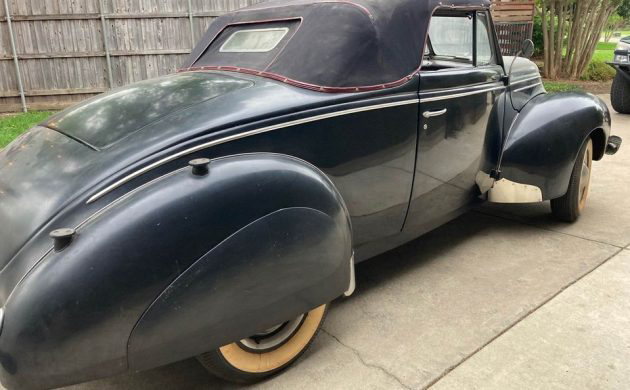
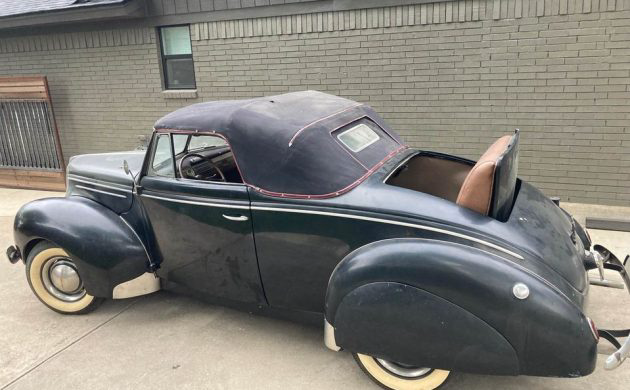
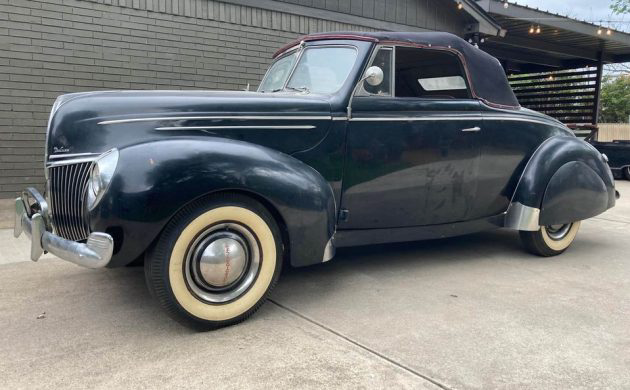

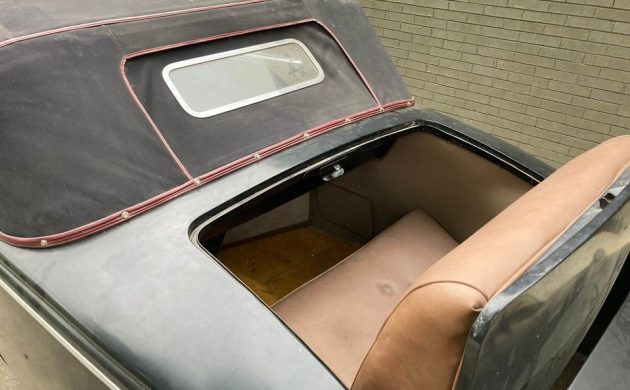
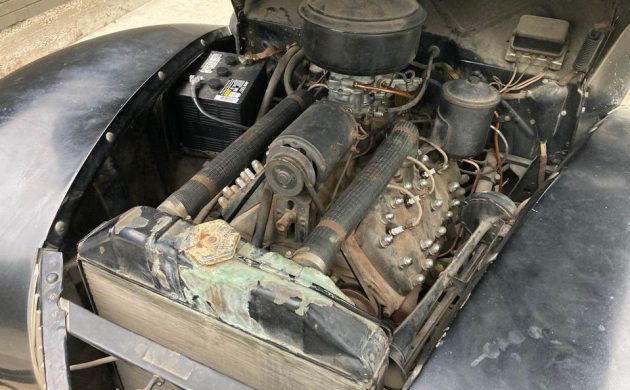

Jeff – Thanks for the detailed article on all of the modifications. Would ’40 doors fit on a ’39? Instead of changing window regulators and vent glass – could one just swap the whole door?
First thing I saw and figured it was a full door swap
Doing some research, the ’39 has wipers on top as windshield could open from bottom. ’40 had wipers on the cowl, fixed windshield. This car may be just may not have been customized, but rather pieced together because of necessity.
’39 Ford convertibles had wipers on the cowl, non-opening windshield.
Ruxvette is correct – the ’39 Fords had wipers above the windshield, with the exception of the convertibles where they were cowl mounted.
Meanwhile, the 1939 Mercury line all had cowl mounted wipers, with Ford following suit in ’40.
I would guess this car was customized right after WW ll , a lot of returning GI started with Customs instead of Hot Rods and 39 and 49 were a good choice. The modifications to this one is very typical of that era. If I had it ,I wouldn’t try to restore it ,I would just continue modifications and make it my own.
Pretty interesting mash-up of 39 and 40 and even a little 38. Has the best of all three to my eyes. You couldn’t get a rumble seat in 40, and the trunk opening and therefore lid was greatly enlarged for 1940. This car essentially has the carryover 38 coupe/convertible body, used for both standard and deluxe in that year. So the customizer appears to have wanted a car with a rumble seat and also the 40 items shown and described. I looked at several Google image results and I can’t be sure about the availability of a rumble seat in both standard and deluxe. I did see 39 deluxe’s with the trunk that carried over from 38 but I also saw images of 39 deluxe’s with the much larger trunk lid which all of the 40 coupes and convertibles used.
I agree. I didn’t know you could get a rumble seat in the old Fords, but they are definitely cool. This one is gone though, for $27,000.
That’s a cool car, and $27K sounds reasonable to me. I like what has been changed on it but if I were to buy it I would want to put the running boards back on it and remove the fender skirts. There’s lots of stuff I would probably want to do to make it more drivable, like more modern brakes and suspension improvements. I would not remove the straight axle as that would remove too much of the original character of the car and there are ways to make it ride and drive good. Make it go, make it stop, then drive and enjoy.
This car without fender skirts would be like great grandma in a mini skirt.
Saw it in person just the other day…..it is really a nice old car…..if I win the lotto….!!!
Beautiful as-is. Polish it a bit, get it running/driving/stopping good and get ready for envious stares.
Guy worked at a Ford assembly factory.. Not a Cadillac factory. He could assemble it faster that way. And it didn’t cost him a dime!!
1940 Ford´s had 14 improvements vs.1939. Apart from the ones already mentioned, adjustable arm type shock absorbers. The 40 coupes were the Mustangs of the 60´s and very popular for moonshining (large trunks and fast).
Very popular for racing too. I am a proud owner of a 1940 std. coupe, learned how to drive on it at age 9, restored it after rebuying the car 24 yrs. later and keep it in mint original condition. Close to age 78 now, still enjoy driving it !!!
Active Barns Finds reader, from Lima – Perú. Thank you, Pedro.
I like this one because the grille appeals to me better than the more popular 40 car. Good deal I think and not much needed to be a driver. Clean up the engine compartment and polish the car, etc.